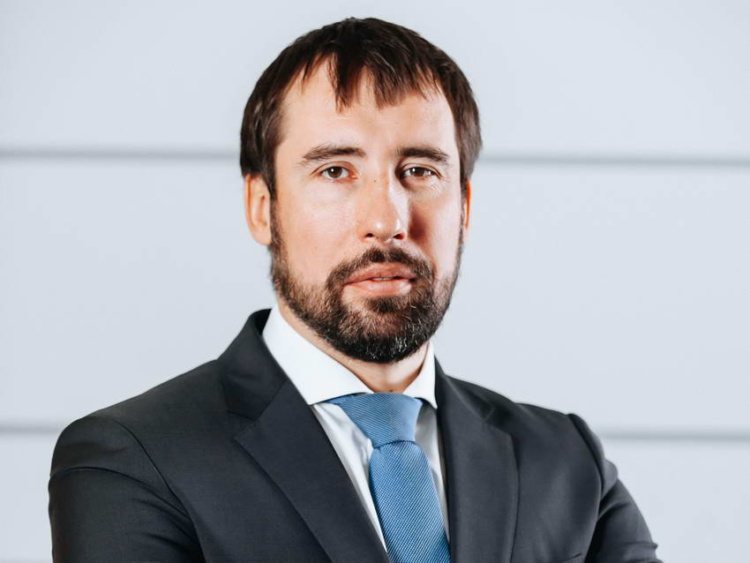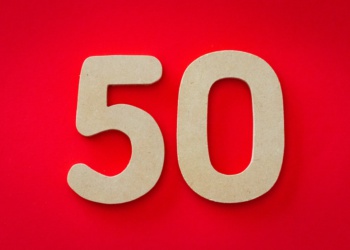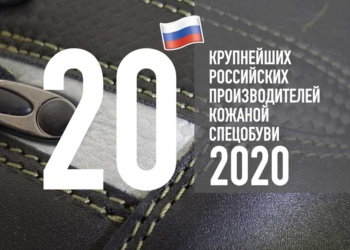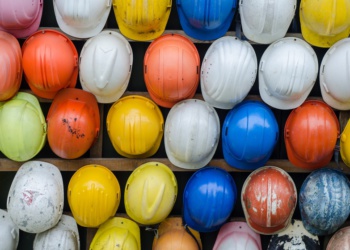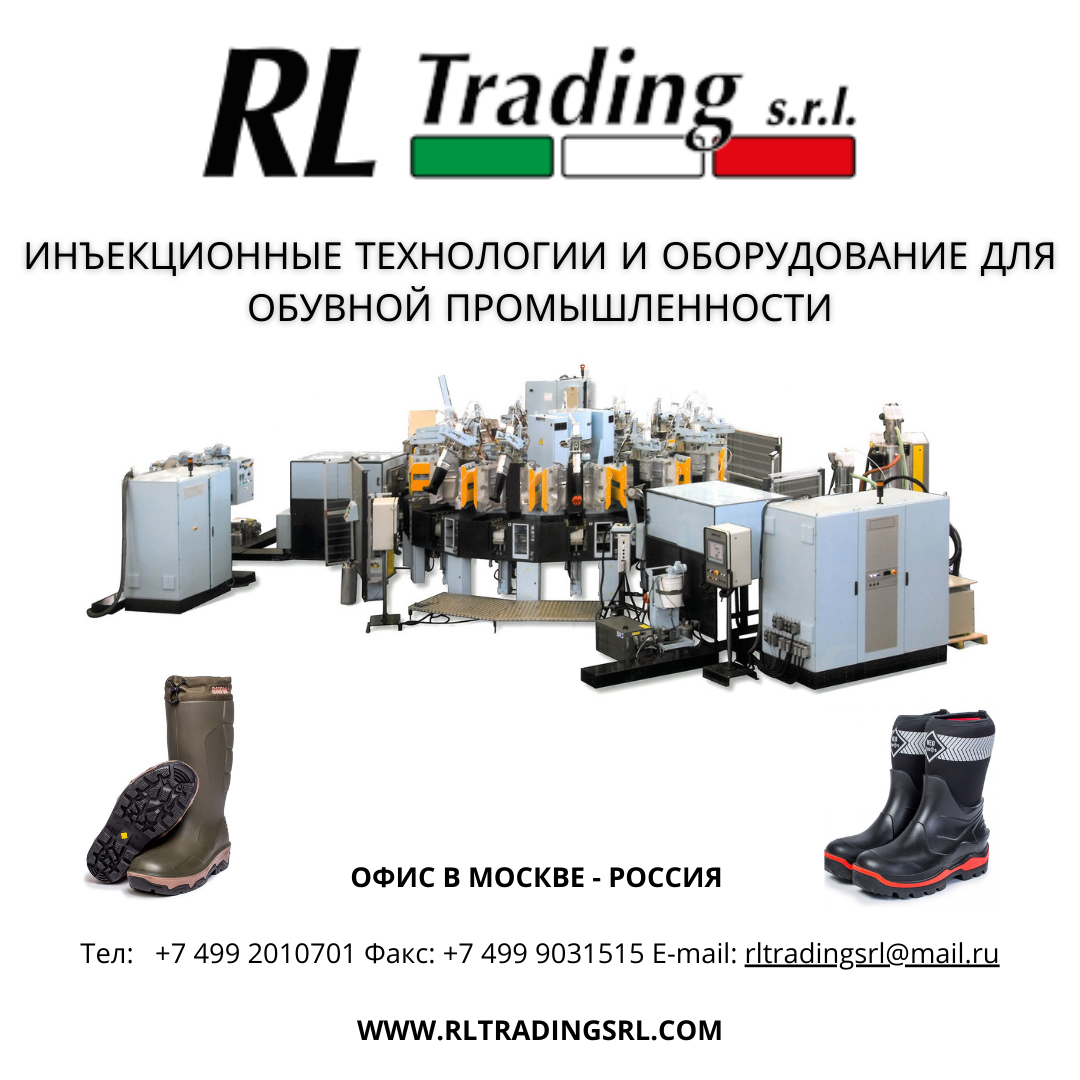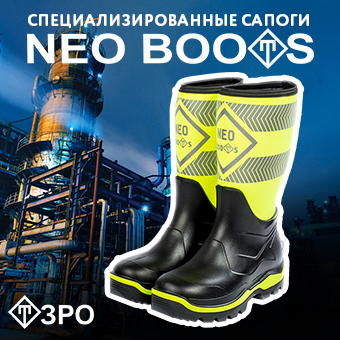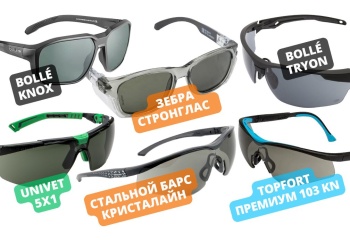About a year ago, “Spetszashchita” Corporation, which administrated three manufacturers of respiratory protective equipment — “Sorbent” (Perm), “Tambovmash” (Tambov) and EHMZ from Elektrostal — announced a rebranding. The three plants merged into “Zelinsky Group” Company, named after the Russian inventor of gas mask, Nikolai Zelinsky. How do companies do in the new capacity? About this Getsiz.ru talked with the managing director of the Group Boris Dubovik.
Good afternoon, Boris. How is it going with the “Zelinsky Group”? What has changed since the official debut of the company in the new capacity?
Good afternoon. To begin with, there are more of us now. Now the group includes four companies: Tambov “ARTI-plant” has joined us. In general, from the business point of view, little has changed. The company is producing, developing and selling respiratory protection as before. Now we are working on enhancing brand awareness. Even at the BIOT show (OSH exhibition, held annually in December in Moscow — ed.), People came up to us and asked: “Where is Tambovmash Company?”, “What happened to Sorbent Company?” We told them that now we are “Zelinsky group”. In response, I was once asked an amazing question: “Did they buy you?” That is, a certain “Zelinsky group” came and bought all those companies. You have to explain to customers what is going on.
The second thing, and the most difficult one, which will require a lot of time, concerns the change within the corporation. Employees should have a clear feeling that we are the “Zelinsky Group” now. Not “Sorbent”, “Tambovmash”, EHMZ or “ARTI-plant”, but “Zelinsky Group”. With this purpose we hold special unification events. For example, not so long ago we summoned about 40 executives from all our companies and held a general strategic meeting. We publish corporate newspapers, make websites, hold presentations and organize competitions in order to address this issue.
Any results?
It is tough, even at the managerial level. People see the merger as a violation of their rights. E.g.: «I used to be in charge, I administrated everything.» And now we have to not only report and coordinate our actions, but also think about how to improve the process from the point of view of the business as a whole. For some people it means leaving the comfort zone. Many are not ready for this yet, but I sincerely believe that the change is possible.
In addition to our efforts aimed at increasing brand awareness and internal attitude changes, we are still engaged in organizational reconstruction. We analyze what functions of the plants need to be combined, for example, legal support, personnel management, sales and supply etc.
Will the plants retain autonomy within the group?
Plants are directly engaged in the sales activities. Sales departments will be formally transferred to the managing company, but contracts will be concluded by the plants. The profit will also be returned to the plants, but the unified budget issues are moved to a higher level. That is, each plant forms its own budget, then it goes further into the consolidated one, we discuss it together, make changes and approve. The same is the case with the production plan: it will be compiled depending on the residual stock and sales plans. We will carry out the optimization of production sites. We will decide at which site and what product it is more appropriate to manufacture. The next issue is the maintenance and repair budget: where and what to repair first of all. Then follows the investment budget: what and in which volume we invest in, in what production site and so on. We will probably centralize executive recruitment so that there is a common system for evaluating potential candidates.
Which means that the merger is beneficial for the plants as a part of the organizational burden is removed from them?
The plants do not see any benefits. As I’ve already said, they see only a loss of independence. A plant is a group of people. They got used to working in one way, now they have to work differently. Not because they worked poorly. But the time, external conditions, the business itself have changed. I give my colleagues a following example. Suppose you have four workshops in the factory. Now imagine that each workshop says: “I have my own HR department, I have my own financial director and my own budget. And I will sign contracts myself and talk with suppliers myself too. And we’ll just live separately and you have to leave me alone.” It got to the point that plants were competing for the same budget, while products should be purchased from the joint company.
Your plants are located in different cities. And the managing company is in Moscow.
Of course, it would be much easier if we were situated compactly. But now it is very simple to communicate over big distances and hold meetings through video-conferencing, telephones, and instant messengers. Our task is to help people to use these opportunities. They are used to solving all issues personally, and given the distance — this is a waste of time. «OK, we will meet in two weeks and discuss everything.» It’s a wrong attitude! If there are issues, let’s hold a meeting straight away. Each plant has well-equipped conference rooms: there are large visual display units, multimedia projectors, real time sound units and so on. We are learning to work in this format, and started even before the “Zelinsky Group” emerged as a legal entity. And there is already a result. Conference rooms are in use all day long. During the day there are meetings of tech experts, marketers, financial managers etc.
Is there any benefit from the merger yet?
The changes that we are now laying down and starting to implement will not have an immediate effect. It will come up sometime during this year. In particular it will be a result of commercial service’s centralization. It is clear that for shareholders the effect is first of all profit, dividends. I sincerely hope that our joint efforts will lead to the company’s increased mobility and efficiency. It means that through restructuring our business, our internal processes, we will be able to provide our customers with services that will allow them to sell more and sell more efficiently. Over time, solving of a task like that will result in money. But this is a matter of time.
You talked about the inertia of managers. What is their average age?
Approximately 43 years in all plants, if we consider the managerial staff from foremen to deputy directors.
Does “Zelinsky Group” have a problem with young personnel and, if so, how is it solved?
I would not say it is a problem, but there are some difficulties though. High personnel turnover is among them. The situation is different in different regions. In Elektrostal, in the Moscow region, it is difficult to find and retain skilled mechanics and welders, since Moscow traditionally draws qualified personnel. In Tambov there is another story.
At each plant of the Group there is a program for attracting young professionals. Another thing is to retain them. The processes at the enterprise are not taking place with the speed to which the young are accustomed to. It seems to them that everything is sluggish, tedious, and boring. They live in a different system of coordinates. The usual motivation does not affect them. A salary increase of 5-10-50% does not matter to them. It is important for them to get interested, involved, to have a comfortable environment, to have the ability to communicate and express themselves. At the same time, young professionals do not guarantee lifelong employment. No one really worked with the staff that has this sort of approach. We see the problem, we begin to tackle it through involvement: we organize youth councils, arrange quizzes, rallies, establish special awards, “Young “Sorbent”, for example. We constantly emphasize that we have special attention to young personnel, to the youth council, to those who actively participate not only in professional, but also in the social life of the plant.
Boris, how do you assess the overall situation on the Russian PPE market? Now the mood is rather low, the economy is stagnating. Plus, many believe that the introduction of a risk-oriented approach will further aggravate the situation.
I’m an optimist. We work a lot on import substitution, we see how much foreign companies sell, and we know the potential of the market. Our company has a tremendous experience in the production of filtering respiratory protection equipment. We started to produce gas masks much earlier than 3M. Yes, in the Soviet time, little attention was paid — if at all — to ergonomics. The USSR produced good missiles, but washing machines, clothes, things that should be comfortable, user-friendly were of no interest, nobody cared about that.
I won’t reveal a secret if I say that the topic of industrial design, which should precede any development, have appeared in Russia quite recently. For product engineers protective properties were prioritized, and only having made a product, they started thinking about its convenience. Today it is quite impossible. Users have already tried user-friendly and ergonomic PPE. Take workwear as example. Today an infinite number of workwear models are for sale. Different styles, colors, cuts — everyone can choose to own taste. In case of PPE convenience and design matter a lot. Convenience and user-friendliness come to the foreground. Therefore, we are rearranging this part of our work: new ranges of products, “Unix” for example, are being finalized. New products are being added to this range. And not just products that are catching up with imported ones, but better than those.
Back to changes.
Yes, when everyone says “bad”, we see that the matter is in nuances. The risk-oriented approach has already been declared at the high level. Now it is important not to let this issue ride its course. It is clear that one must not give the employer the right to determine risk factors. In this case the criterion for choosing PPE will be the price and nothing else. The professional community — manufacturers and suppliers of PPE — need to work together on techniques and on secondary legislation precisely at the stage of development. In Western countries, the issues of insurances and provision of workers with PPE are combined. Increased risk ratio is fraught with high insurance premiums. You start thinking about what to invest in: eliminating harmful factors, general improvement of working environment, equipping employees with PPE or something else. If I reduce the risk factor, the insurance contributions are reduced too, everything is well. Trade unions do not put pressure on me. I do not bear increased responsibility. Such a system works well because insurance companies are a non-state market in the West. They are private companies who know how to count money, and they can stand up for themselves. In our case, so far everything is tied to the state owned insurance companies.
And what about your idea to achieve support of domestically produced PPE at the legislative level?
The general classifier of the economic activity types relates PPE to the responsibility area of two departments: chemical-engineering branch and light industry. As a result, we are really neither here nor there. Where we can, we use preferences for the light industry, for example, resolution 925 on the support of domestic manufacturers in the procurement of companies that are partially state-owned. But as a rule, PPE belong to mixed lots. The share of RPE is very difficult to distinguish. Of course, we are trying to work with companies that are partially state-owned. We communicate, discuss, and write. Sometimes we get somewhere, sometimes we don’t. We place high hopes in this regard on the PPE Association (ASIZ). It is very important that it supports our initiatives, helps to organize discussions with relevant departments and to look for ways to solve problems.
The West imposes sanctions, restricting Russia in a number of ways. At the same time when you come, say, to a restricted-access shipyard, you see how a Russian worker using an American PPE makes a Russian submarine. But the same half mask is a completely replaceable thing. If something is not satisfactory with the domestic product, let’s discuss it. We have enough skilled developers and engineers and decent equipment. We do not need money in terms of industrial organization. We need to stimulate the demand for our products. We need real support, not just talk.
A year ago at the BIOT show in a conversation with Prime Minister Medvedev you raised the issue of state-owned companies using imported PPE. How is the situation developing?
We sent a list of 22 companies to the government. As a result we received a negative feedback, indirectly, but nonetheless negative. A typical bureaucratic approach: «You are forcing us to work and report.» They cannot give a proper answer, but they write nonsense like “There are no similar products in Russia, therefore we have to buy them abroad” or “We buy it at a local company, it’s a domestic product”. But in fact, our colleagues manufacture only a small part of their products locally: for example, they have a facility producing particulate filtering facepiece respirators, but bayonet gas filters and cartridges and insulating half masks are brought from abroad.
And what about private companies? For example representatives of «Alrosa» say they are ready to use quality products of any manufacture.
Businessmen are good at counting money. Here we have clear advantage. Our new lightweight full-face mask Unix 6100 is almost twice as cheap as its foreign counterparts — 4.5 thousand rubles against 8 thousand, and its performance is just as good. We are ready to give products for field testing, but in its evaluation it is vital to avoid subjective attitudes. A person, who would use one product during one shift and another product during next one, should impartially write his or her opinion. And not just “I like this company more”. We are doing business in Russia, where people for one reason or another, stick to certain brands.
Magic of a brand name?
Yes, exactly. For them who are really open, we are always ready to show, present, explain and wear the product along with the workers. We make RPE. It means that any mistake here can endanger not only health, but also life. Therefore, our company has established a rule — and it is a very good one — that our developers come to the production sites where they participate in industrial tests. That is, the people who create the PPE use them in hazardous conditions together with the workers. In this way they can feel if the mask is convenient or not, if they can smell the odor or not. This is great in terms of product finalizing. In addition, when workers see that the people who come to them and use the product along with them, are not just managers or travelling peddlers, but those who actually develop and produce the masks, it works for the brand, for the positive attitude towards us.
What are your plans for other markets? You said the company seriously considers starting export.
We see opportunities, firstly, here in Russia, and secondly, abroad. In 2018, we set up a special export division. The company has been engaged in export before, but now it will do it much more actively. We are talking about participation in various events abroad, real sales, analyzing our potential competitors’ products and finalizing our products. It concerns also work with packaging. The story with packaging is about the same as with ergonomics. International market needs a smart wrapping. You cannot sell an expensive product in low-quality packaging. It is like selling an iPhone wrapped in brown paper.
Developing export, one sets two goals: first, of course, to earn money in the new markets. Besides foreign sales are disciplining, allowing one to optimize internal processes. You see the requirements that your product does not meet for some reason. You determine these reasons — in the product, packaging, business processes or logistics, and as a result you increase your efficiency as a whole.
We do not consider sales to the CIS countries as export. Our goal is non-CIS countries: the Middle East, certain European countries, Southeast Asia, Latin America. There is an intention to certify our products according to the ANSI standards. The market in the USA is more flexible. Price and quality are of priority there. Magic of brand names is less pronounced in the US. We expect this year to increase exports by 150 percent compared with 2018, from 200 thousand to 500 thousand.
Thank you, Boris. I hope we’ll discuss how these plans are being implemented.
Of course. See you next time!



